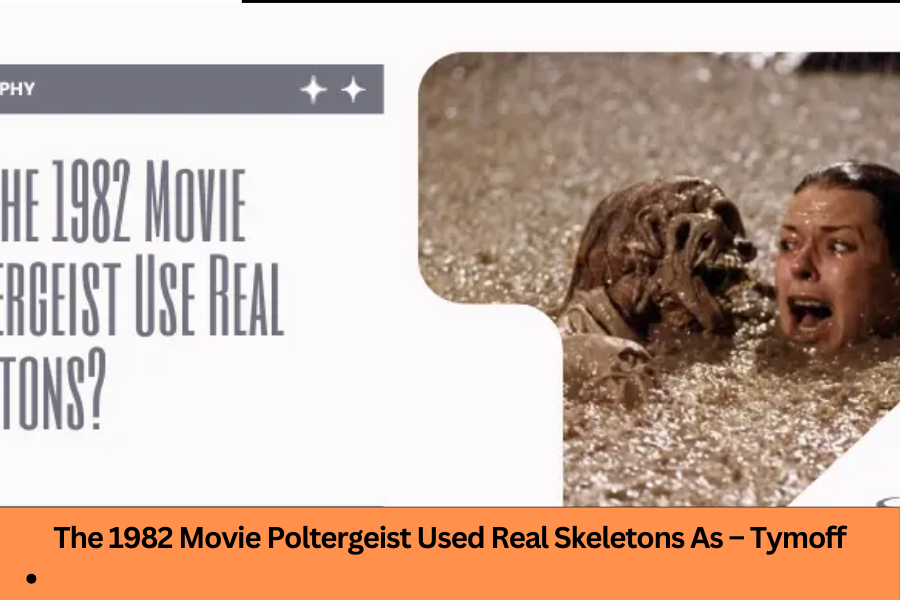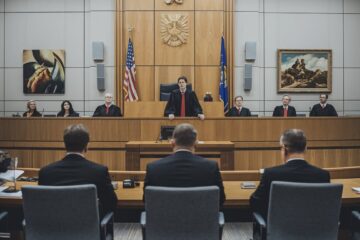For decades, Poltergeist (1982) has captivated audiences as one of the most iconic horror films ever made. Directed by Tobe Hooper, with production backing from Steven Spielberg, this supernatural thriller left a lasting impact on the genre. Known for its intense suspense, groundbreaking special effects, and disturbing storyline, Poltergeist continues to haunt viewers. However, a startling revelation about the movie has added a chilling new layer to its legacy: the claim that real human skeletons were used as props during production. This unsettling fact has ignited debate within the film industry and horror community, raising ethical questions about where the line should be drawn between cinematic realism and moral responsibility.
Where Did the Claim Originate?
The idea that real human skeletons were used in Poltergeist surfaced shortly after the film’s release. The claim primarily revolves around the infamous pool scene, where JoBeth Williams’ character, Diane Freeling, encounters several skeletons in the water. According to reports, instead of using plastic skeletons as one might expect, the production team chose to use real human remains because they were more affordable. This revelation shocked many fans and industry professionals alike, contributing to the film’s mystique and sparking widespread debate over the ethics of using human remains as props.
The controversy surrounding this claim only added to the film’s eerie atmosphere, making it even more unsettling for viewers who couldn’t shake the notion that real bones were on screen. Over time, this rumor became one of the most discussed topics in horror cinema, with fans, actors, and even the production team weighing in on the validity of the claim.
The Truth About Real Skeletons in Poltergeist
Despite the intense speculation, the truth about the use of real skeletons in Poltergeist remains murky. JoBeth Williams, who played the character of Diane Freeling, added fuel to the fire when she mentioned in interviews that she was uncomfortable during the filming of the pool scene because she was aware the skeletons were real. According to Williams, the production team informed her that it was cheaper to use real skeletons rather than creating or purchasing artificial ones.
While her account is compelling, it is important to note that no other cast or crew members have confirmed this claim publicly. The lack of corroboration means the truth behind the skeletons remains speculative. Regardless, Williams’ statements were enough to stir controversy and generate an ongoing discussion about the moral implications of using real human remains in cinema.
Creative Insights: Spielberg and the Team’s Thoughts
Steven Spielberg’s involvement as a producer in Poltergeist helped elevate the film to new heights. Spielberg, known for his attention to detail and his passion for authenticity, played a pivotal role in shaping the film’s production decisions, including the use of skeletons. Some crew members claimed that the choice to use real bones was driven by a desire for heightened realism, which added to the terrifying atmosphere of the movie. However, this decision sparked discomfort among other members of the team, who found it disturbing.
The divide within the production crew highlights the broader debate between realism in cinema and ethical responsibility. Some felt that using real human skeletons made the horror more visceral, while others believed it crossed a moral line. Spielberg’s acknowledgment that real bones were indeed used has since fueled further controversy, emphasizing the complexity of this decision in the context of creating authentic horror.
How Poltergeist Influenced the Film Industry
The use of real skeletons in Poltergeist prompted a wave of ethical considerations within the film industry. The practice raised significant concerns about respect for the deceased and the moral implications of using human remains for entertainment. While Poltergeist became a groundbreaking achievement in the horror genre, it also served as a cautionary tale. Filmmakers began questioning where to draw the line when it came to realism and respecting human dignity.
The controversy surrounding Poltergeist played a pivotal role in shaping the film industry’s approach to props, particularly those with sensitive origins. In today’s filmmaking landscape, strict guidelines govern the sourcing of props, and the use of real human remains has become virtually nonexistent. The lessons learned from Poltergeist have led to more responsible and ethical practices in the industry, particularly when it comes to respecting cultural and moral boundaries.
Moral Responsibility in Today’s Film Industry
In the modern era, advances in special effects and technology have made it unnecessary to use real human remains in film production. CGI (Computer-Generated Imagery) and animatronics provide filmmakers with the tools to create lifelike scenes without compromising ethical standards. This shift in technology has allowed directors and production teams to achieve their artistic visions without resorting to practices that could be considered disrespectful or morally questionable.
Today’s film industry reflects a growing commitment to ethical filmmaking, with stricter guidelines in place to prevent the use of sensitive materials. The evolution of special effects technology has not only enhanced the creative process but has also reinforced the importance of ethical responsibility in film production. As filmmakers continue to push the boundaries of creativity, they are now more mindful of the moral implications of their choices, ensuring that they uphold the values of respect and dignity.
Unusual Events After the Release of Poltergeist
Beyond the controversy over real skeletons, Poltergeist has been surrounded by an aura of tragedy, with many referring to the so-called “Poltergeist curse.” Several actors involved in the film experienced untimely deaths, further adding to the film’s dark legacy. Dominique Dunne, who portrayed the eldest Freeling daughter, was murdered in 1982, shortly after the film’s release. Heather O’Rourke, who played Carol Anne, tragically died at the age of 12 in 1988, just before the release of Poltergeist III. Additionally, Julian Beck, who appeared in Poltergeist II: The Other Side, passed away from cancer during the film’s production.
These tragic events have fueled speculation that the film may be cursed, though there is no concrete evidence to support this theory. Nevertheless, the association of real-life misfortune with a film that used real skeletons has only deepened the film’s unsettling reputation, making it one of the most haunting productions in cinematic history.
Uncovering the Conflict: Ethical and Legal Implications
The revelation that real skeletons were used in Poltergeist sparked outrage, prompting advocacy groups to call for greater transparency and accountability in the film industry. The use of human remains for entertainment raised pressing ethical and legal questions, particularly around the need for clearer regulations to prevent such practices in the future.
As a result, Poltergeist became a turning point in the discussion surrounding the use of real materials in film. It underscored the importance of treating human remains with respect and dignity, and filmmakers were urged to adopt more responsible practices. The ongoing debate over the ethical treatment of human remains in movies has since shaped industry standards, ensuring that props are sourced ethically and handled with care.
Honoring and Respecting Diverse Cultures
The use of real skeletons in Poltergeist also highlighted the importance of cultural sensitivity. Different cultures have varying beliefs regarding the treatment of the deceased, and filmmakers must approach such matters with respect. The controversy surrounding Poltergeist prompted greater awareness of the need for cultural sensitivity when using materials that could be seen as disrespectful to certain communities.
Today, filmmakers are more mindful of how their choices may impact diverse audiences, and the industry as a whole has adopted practices that honor and respect cultural values. This shift reflects a broader commitment to maintaining ethical integrity and cultural awareness in all aspects of film production.
The Appeal of Horror and Realism in Film
The lasting appeal of Poltergeist stems from its ability to tap into our deepest fears and fascination with the supernatural. Horror films often exploit the audience’s desire for realism, as genuine elements make the scares feel more intense and immersive. The use of real skeletons in Poltergeist, whether true or rumored, underscores how the blending of reality with fiction heightens the sense of terror.
Horror movies compel us to confront the unknown, and the fear they evoke is often amplified when real-world elements are woven into the narrative. In the case of Poltergeist, the claim that real skeletons were used has only deepened the film’s psychological impact, making it an unforgettable experience for audiences.
Conclusion: Lessons from Poltergeist
The legacy of Poltergeist continues to captivate and intrigue both horror enthusiasts and filmmakers. Whether or not real skeletons were used, the film’s blend of realism and supernatural terror has left an indelible mark on the genre. The controversy surrounding the use of human remains highlights important ethical considerations that have since influenced the film industry.
As filmmaking technology advances, directors now have access to tools that allow them to create compelling content without compromising moral standards. The lessons learned from Poltergeist serve as a reminder of the importance of balancing artistic vision with ethical responsibility, ensuring that the film industry upholds its commitment to respect and dignity for all involved.
Keep an eye for more latest news & updates on Forbes Zine.




